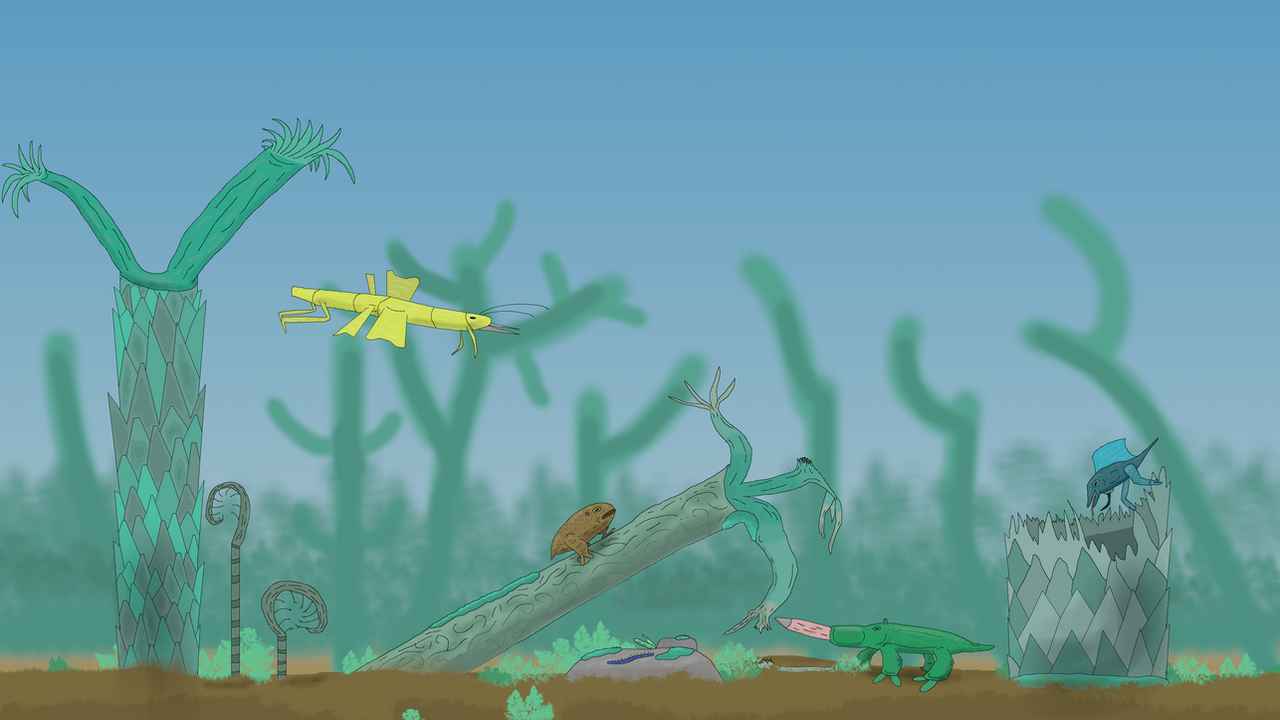HOME | DD
 ZTC3 — Bogdown Swamp
ZTC3 — Bogdown Swamp

#alienplanet #speculativeevolution #speculativebiology #speculativezoology #speculativexenobiology
Published: 2022-04-09 17:47:39 +0000 UTC; Views: 1111; Favourites: 9; Downloads: 0
Redirect to original
Description
So, here's a piece I've been working on and off on over the past few days.On the northernmost part of the supercontinent's peninsula is a sweltering equatorial swamp, where the life of the planet Brough are least affected by climate change of this time period. A frequently flooded area, the Batras are common here, as seen on the fallen tree. This Batras is frog-like, hopping from place to place, squishing whatever Multipod it comes across with its front claw before licking it up with its cat tongue-like radula.
The gliding animal here is a large Multipod, analogous to earth insects, and can grow to large sizes during this time period thanks to increased oxygen levels. Unlike earth bugs, these organisms have camera eyes, as most multicellular life on Brough share this trait. This bug is large enough to eat this Batras, but it doesn't seem to be interested.
The green critter is a Flumpus, descended from the Pattypus directly and as a result, has the same retractable proboscis and no eyestalks, reduced to muscles that give it chameleon-like eyes. the head portion has a large lip that houses the proboscis, which I had a lot of trouble drawing since it looked too much like a penis. Like all Flumpus, it has a beak that opens sideways. Flumpuses have highly efficient chewing mechanisms and tough beaks, making them perfect herbivores.
The blue guy is an insectivorous Shellaroo, now shell less, and sports a sail like its relative, the Redfreckled Venator. It rips open logs to eat what's inside by slurping it up with a long radula.
Lastly, on the rock is a small Gelraiser, a part of a separate kingdom of life, who breathe out the tops of their skin and eat through the bottom. it moves along in the dark, sensing where to go with long strings of cilia and light sensing patches. They have adapted rather effectively to the huge competition in the last few million years, but most Gelraisers still live where most life can't.
The plants here are important too. The land Cyants grow into large tree ferns, analogous to the carboniferous period, where they reproduce by spores. Another interesting plant here are the Curlplants. When they grow, they curl up to put all their gamete organs in one place, and to shield them from the sun to put a sticky coat onto them. When a bug flies through this curl, the gametes stick like slimy pollen. Once pollenated, the plant then forms an even slimier net of spores in the middle, looking almost like a dreamcatcher. The slime evaporate within hours and the spore falls off. This lineage will see great success in the coming time period.
Link to full project on my page.
























